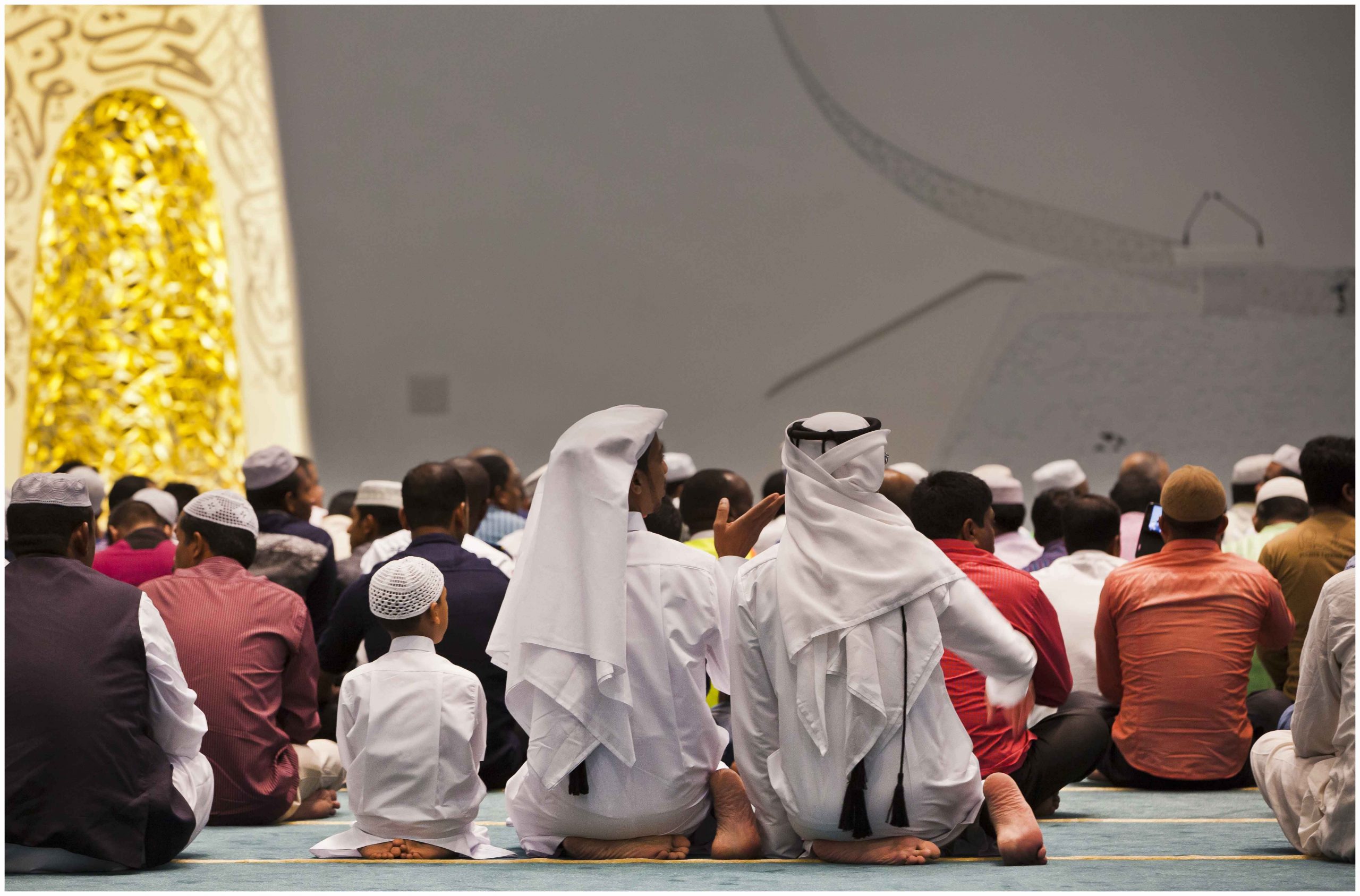Delving deep into Qatari culture, Doha News looks at how Eid al-Fitr is celebrated in Qatar.
Eid al-Fitr, which literally translates to ‘festival of breaking the fast’, marks the end of the holy month of Ramadan for Muslims around the world.
It is considered an event of celebration and joy, with Muslims marking the occasion through prayers and supplication, and in Qatar, residents add an extra authentic touch to it.
Eid officially begins when the first sighting of the new moon is witnessed. Thousands of worshipers gather in mosques and prayer spaces around the world on the morning of Eid al-Fitr.
Considered a national holiday in Islamic countries, the celebration always takes place during the tenth month of the Islamic calendar, called ‘Shawwal‘.
During Eid, it is common for people to dress in new clothes as it is considered a sunnah (a tradition of Prophet Muhammed) to wear something new. Amongst other common practices carried out prior to Eid al-Fitr, Qatari women and men flock to Abaya and Thobe tailors to sew themselves a fresh set of traditional attire to flash for the occasion.
The prophetic teaching that cleanliness is half of the Islamic religion has also led to the widespread and popular practice of deep cleaning homes prior to Eid.
On a grandeur scale, the Gulf nation also puts on its Eid ensemble as twinkle lights, fireworks, Eid festivals, and Eid posters cover cities, fostering a festive environment for its majority-Muslim population.
In Qatar, it is common practice to spend the three designated days of Eid visiting family and friends. The old are usually given priority during the visits, especially on the first day of Eid, which reflects the highest form of respect for the elderly.
Muslims celebrate the holiday through a series of activities and corresponding traditions, rendering each community unique whilst simultaneously uniting more than two billion people around the world.
Some of the traditions observed during this Islamic event loosely include families congregating for the Salat al-Eid (which translates to Eid prayers) – arguably the most important ritual of the day. These are held shortly after the Fajr dawn prayer on the morning of Eid.
A breakfast feast is then prepared to gather all the members of the family for the first morning breakfast in a month.
The ‘dhabiha’, a traditional dish which simply means the Halal method of slaughtering an animal, is usually served at the lunch table in Qatari households.
Following an exhausting month of altered sleep due to late night prayers in Ramadan, as well as the early rise for the dawn Eid prayers, a nap is then typically due. The Eid nap provides ample energy for the next activities of the day, which including visiting senior members of the family in the evening.
In Qatar and other parts of the Arab world, a common Eid tradition in various cultures is the handing out of the Eidiyah, a gift in a financial form, given to children by older relatives or family friends.
Qatari women have a long-standing custom of decorating their hands and feet with beautiful and distinctive henna designs. Some say it is only after the henna is applied and jewellery is adorned does the Eid look for many women in Qatar come together.
As families venture out, some of the Eid greetings exchanged includes, ‘Eid Mubarak’ which means a blessed or happy Eid. Others also say ‘Kul ‘am wa enta bi-khair’ which translates to ‘may every year find you in good health.’







